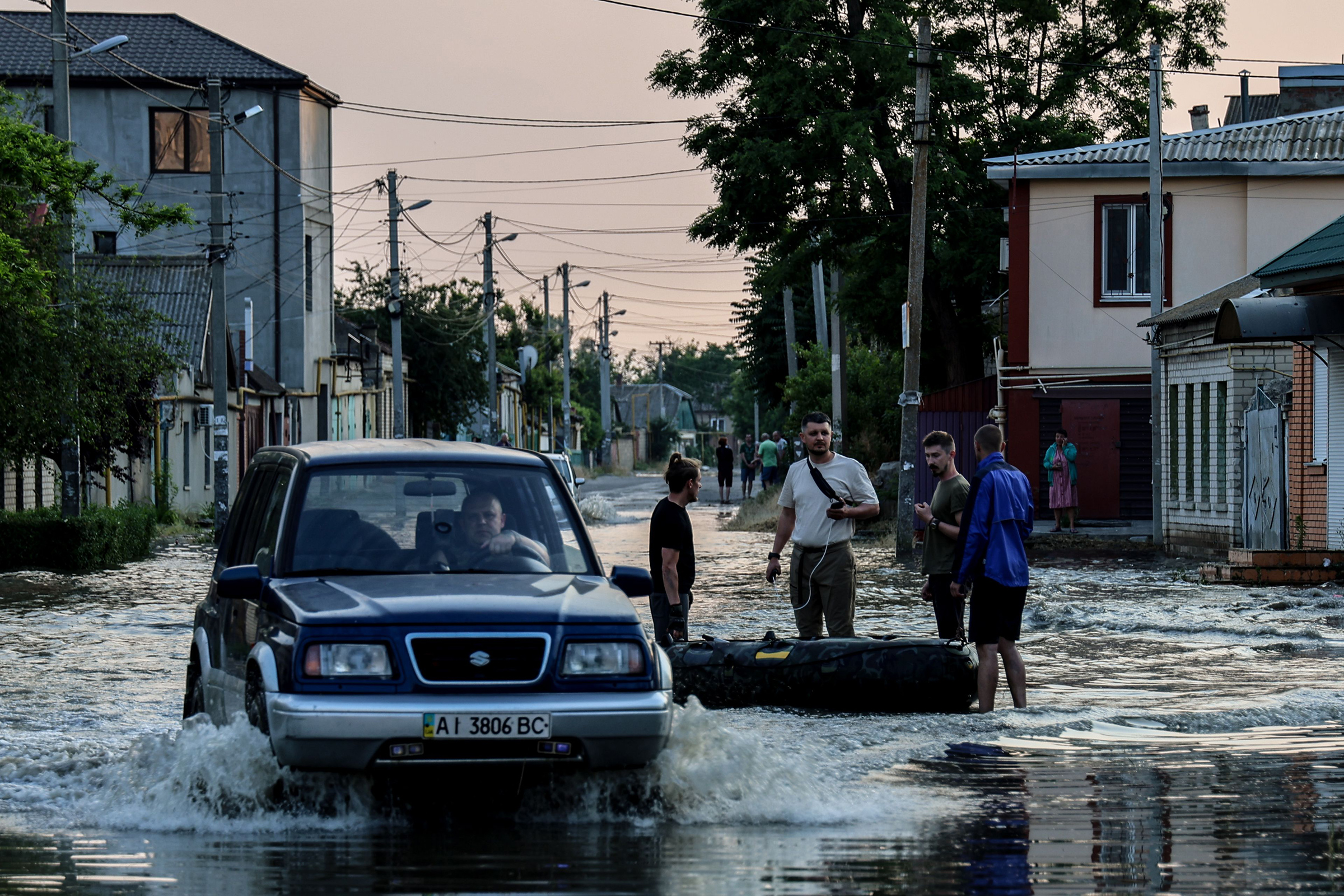Last fall, when the Ukrainian counteroffensive existed mostly on the maps and in the minds of its commanders, President Volodymyr Zelensky understood that its greatest obstacle could be the Dnipro River, especially as it flows through the southern city of Kherson and, about 50 miles upstream, fills the reservoir of a massive hydroelectric dam.
“For us the Dnipro is the hardest story,” Zelensky told TIME during his visit to Kherson in November. A few days earlier, Russian forces had retreated to the left bank of that river, taking up defensive positions in the south of Kherson, while the Ukrainians pushed forward to liberate the city’s northern half. The Dnipro River thus became the front line in that critical part of the war zone, and the Ukrainian troops could not advance any farther unless they found some way to cross it. “In all wars such operations take away a great many lives,” Zelensky said. “Fording a river is always that way, a serious, dangerous story.”

It became far more dangerous on the morning of June 6, when a massive explosion ripped through the hydroelectric dam near Kherson, flooding the southern parts of the city along with dozens of settlements and towns near the riverbanks. Within hours of the blast, Zelensky blamed the Russian forces for causing what he called a “brutal act of ecocide”—and a possible war crime. “The world must react,” he said in a statement. “Russia is at war against life, against nature, against civilization.” NATO and European leaders also appeared to lay blame on the Kremlin, whose spokesman, Dmitry Peskov, denied responsibility and, in a typical bit of misdirection, accused Ukraine of blowing its own dam in an act of “premeditated sabotage.”
The motives, however, looked clear for the Russians, and not for the Ukrainians. The flooding along the Dnipro will make it much harder for Ukraine’s armed forces to advance southward from Kherson toward Crimea, whose liberation Zelensky has repeatedly named among his top objectives. “Ukraine has no material interest in blowing the dam, which could flood 80 Ukrainian cities and displace hundreds of thousands of people while damaging Ukraine’s already-tenuous electricity supply,” the Institute for the Study of War, a think tank, said in an analysis published last October. “Russia, however, has every reason to attempt to provide cover to its retreating forces and to widen the Dnipro River, which Ukrainian forces would need to cross to continue their counteroffensive.”

After the dam blew up on Tuesday, Ukraine’s armed forces promised to continue their offensive despite the catastrophic deluge. Their forces have all the “necessary watercraft” to cross the Dnipro and pursue the Russians toward Crimea, the military said in a statement. When Zelensky visited that region last fall, he also saw the river slowing the Ukrainian advance. “It might put the brakes on certain decisions,” he told TIME. “But it will not stop us.”
More Must-Reads from TIME
- Inside Elon Musk’s War on Washington
- Meet the 2025 Women of the Year
- The Harsh Truth About Disability Inclusion
- Why Do More Young Adults Have Cancer?
- Colman Domingo Leads With Radical Love
- How to Get Better at Doing Things Alone
- Cecily Strong on Goober the Clown
- Column: The Rise of America’s Broligarchy
Contact us at letters@time.com